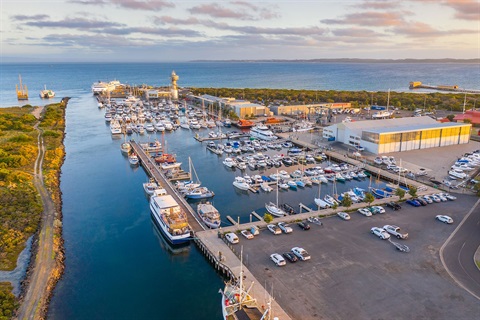Climate Emergency Response Plan

Queenscliff and Point Lonsdale are already being affected by the impacts of climate change. We face an increasing risk from coastal inundation, sea level rise and bushfires. As a community, we need to act now. That's why Council has created and adopted a Climate Emergency Response Plan.
Many residents have already taken action to reduce their impact on the environment, and Council has reduced its emissions by a third since 2013, but we'll have a much greater impact by working together. The Climate Emergency Response Plan includes actions Council and the community will take together to make the Borough a zero-carbon community by 2031.
What are we doing currently?
We've developed an award-winning Climate Emergency Response Plan in collaboration with the community. The plan commits to achieving net zero emissions by 2031, as well as interim steps including matching local electricity consumption with 100% renewable energy by 2025.
We'll achieve our zero-net emissions goal by completing or facilitating 54 individual actions laid out in the plan. Actions vary from solar bulk buys to a shared commitment to phase out single-use plastics throughout the Borough. Many actions involve partnerships, with community action playing a key role in achieving the targets. See where all actions are at in the table below.
We've taken concrete action to reduce emissions and deliver climate-friendly infrastructure for our community. By being the first local government area in Victoria to change all our street lighting to low-emissions LEDs, purchasing 100% renewable energy for Council buildings, and making progress towards our Climate Emergency Response Plan, the Borough of Queenscliffe is a leader in climate action.
Under the CERP Pillar 6. Adaptation and Resilience Action 8. Coastal Inundation and Sea Level Rise: Advocacy; Council has developed in partnership with other government lead agencies, Wadawurrung Traditional Owners and relevant community groups the draft of the Coastal and Marine Management Plan (CMMP).
Compiled with the input of more than 270 consultation respondents, the Plan defines the Borough’s relationship with the coast in the face of climate change, erosion and other coastal hazards. It provides a roadmap for how Council will use, manage and protect its coastal landscapes, helping to ensure individual developments or changes on the coast are considered strategically and in line with community priorities. For more information, click the button below.
Learn more about the CMMP
Our Climate Emergency Response Plan
The Climate Emergency Response Plan sets three ambitious targets to achieve over the next ten years:
- Our community’s electricity consumption will be matched by a 100% renewable electricity supply by 2025
- Our community’s energy needs will be matched by a 100% renewable energy supply by 2027
- Our community will have transitioned to a Zero Carbon Community by 2031.
These targets will be achieved by working on 54 action items across the following eight pillars:
- Wadawurrung country, cultural heritage and values
- Renewable energy
- Sustainable buildings
- Sustainable transport
- Mobilisation, education and collaboration
- Adaptation and resilience
- Consumption and waste
- Environmental regeneration.
The actions that sit under these pillars will be reviewed by Council every two years. At the five year mark, a major review of the full plan will take place.
Click here to read the full plan, including the details of all 54 action items.
Many of the 54 action items within the plan include opportunities for local residents to take part. The full list of action items in Council's Climate Emergency Response Plan contains icons that indicate which actions will be led by or involve local residents.
Where Council is leading a project that includes community input, we'll make announcements beforehand to let residents know how to get involved.
Read the table below to see how each action is tracking.